
Curating New Ethnicities
Funded by the British Academy, Curating New Ethnicities is a four-year project that examines the unfolding impact of media and technological change on migration, race, and ethnicity in Britain.
With a focus on the British South Asian community, we analyze archival and trade press materials, industry and policy reports, and media artifacts to explore the dynamic production of ethnic and racial identities. Exploring key turning points in British South Asian cultural history - from the late 1940s through the current moment - we explore how varied technological, industrial, political, and policy shifts have shaped practices of media production and circulation across film, television, and the digital media sectors. This work draws on and makes connections across multiple fields of study including media history, media industry studies, postcolonial studies, race and ethnicity, and digital platforms.
Team Overview

Aswin Punathambekar is Professor of Communication at the University of Pennsylvania’s Annenberg School for Communication and Director of the Center for Advanced Research in Global Communication (CARGC).
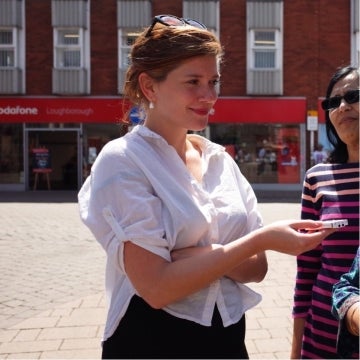
Julia Giese is Lecturer at the Göttingen Diversity Research and a postdoctoral Research Associate at the School of Social Sciences and Humanities, Loughborough University. She holds a PhD in Media Studies from Loughborough University London.

Diwas Bisht is Lecturer in Animation at School of Digital Arts (SODA), Manchester Metropolitan University and as a postdoctoral Research Associate at School of Social Sciences and Humanities, Loughborough University.

Sim Gill is a doctoral student at the Annenberg School for Communication at the University of Pennsylvania and fellow at the Center for Advanced Research in Global Communication (CARGC).
Research and Publications
As part of the project, we have conducted extensive archival research within the BBC’s Written Archives and the BFI National Archives, examining British South Asian participation in the early years of institutional television. Some of this archival research has informed our recent journal article, titled ‘Public Service Media and Race Relations in Postcolonial Britain: BBC and Immigrant Programming, 1965-1988’ (2023), in which we explore how British South Asians negotiated the politics of race in the formative years of British broadcasting from the 1960s to the 1980s.
We are further exploring this history through an examination of the Independent Television (ITV) archives as well as the Black Cultural Archives, looking at intersections that emerge in the 1970s and 80s between independent television, Black and Asian community-led media production, and the onset of video technology.
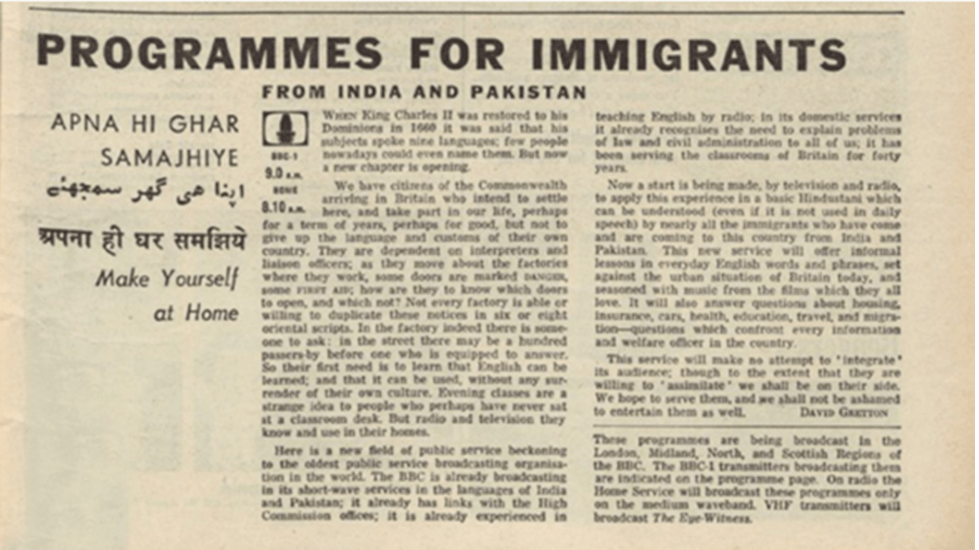
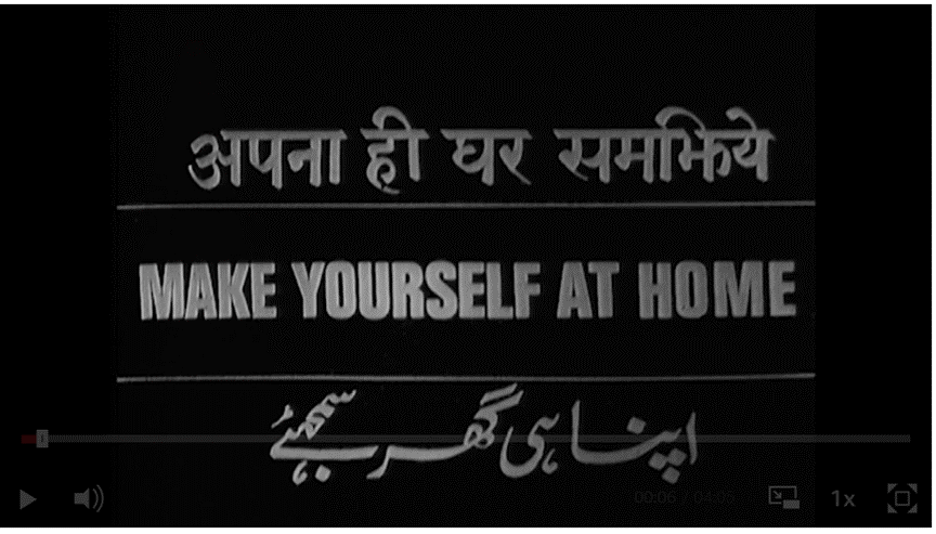
In parallel, we have also been conducting research on how British South Asian producers navigate the opportunities opened up by new media ecologies, looking into their critical mobilisation of video sharing and social media platforms to challenge dominant ideas of Britishness and cultural citizenship. This research has informed our article, ‘Curating new ethnicities in a digital era: Women and media work in the British South Asian diaspora’(2022) that analyses the unfolding impact of social media platforms on the politics of race, ethnicity, and gender in the UK through the work of three British South Asian media producers. This research was first presented at the annual conference of the International Association of Media and Communication Research (IAMCR) in June 2021.
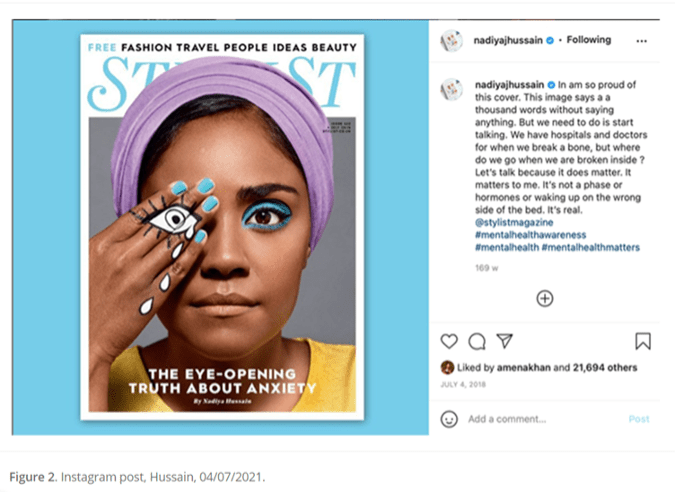
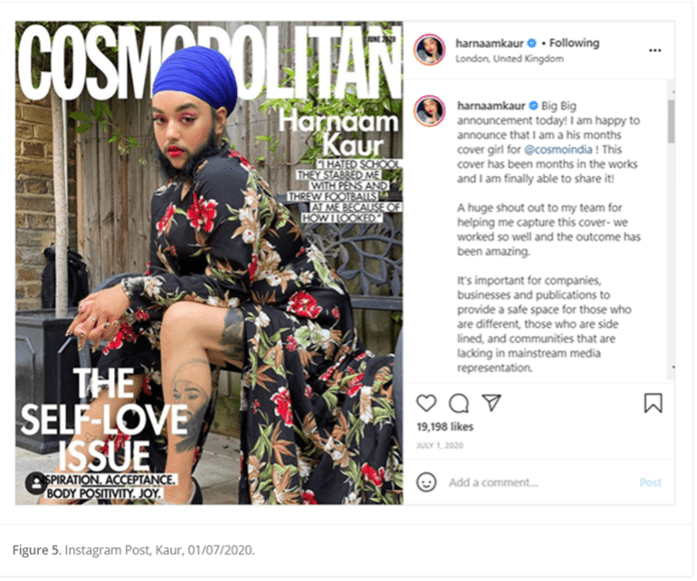
Ongoing Research and Writing
At present, we are examining how Muslimness in the Anglophone West is being reimagined and re-presented, driven in significant ways by new industrial logics and techno-cultural possibilities enabled by streaming video services. Taking stock of shows including Man Like Mobeen, Ramy, We Are Lady Parts, and Ms Marvel, we grapple with the limits of ‘representation’ particularly in light of how media programs that involve ethnic minorities can often be carefully positioned in relation to market logics of cultural diversity and inclusivity. Building on recent critiques of diversity policy in the commercial media industries, we ask: How do we rethink our frameworks and assumptions given that racism and Islamophobia – figured differently, of course, in the U.S. and Britain – operate in the context of more, not less, visibility? Given the continual and savvy recognition by the state and the media industries of various kinds of difference, how should we approach breakthroughs in media representation? How can we make representation matter, anew?
We will be presenting this research at the annual conference of the Media, Communication, and Cultural Studies Association in Glasglow, U.K.
We are also curating a resource guide that offers students, teachers/scholars, policymakers, and industry professionals a historical overview of how media and technological changes have shaped British South Asian culture, identity, and politics since the late 1940s. Each section of the guide focuses on a particular period, that maps the broader social and political context. These sections are supported through particular case studies of prominent media artifacts and a list of scholarly sources for further reading.
